
Next up, we moved onto our first session of short 5 minute presentations. We were very lucky to have an incredible range of fascinating projects featured during this session! Many of these papers focused on key themes and ideas that we were trying to look at during the conference, including:
First we had Paola Ricciardi presenting on the #Fitz3DChallenge.
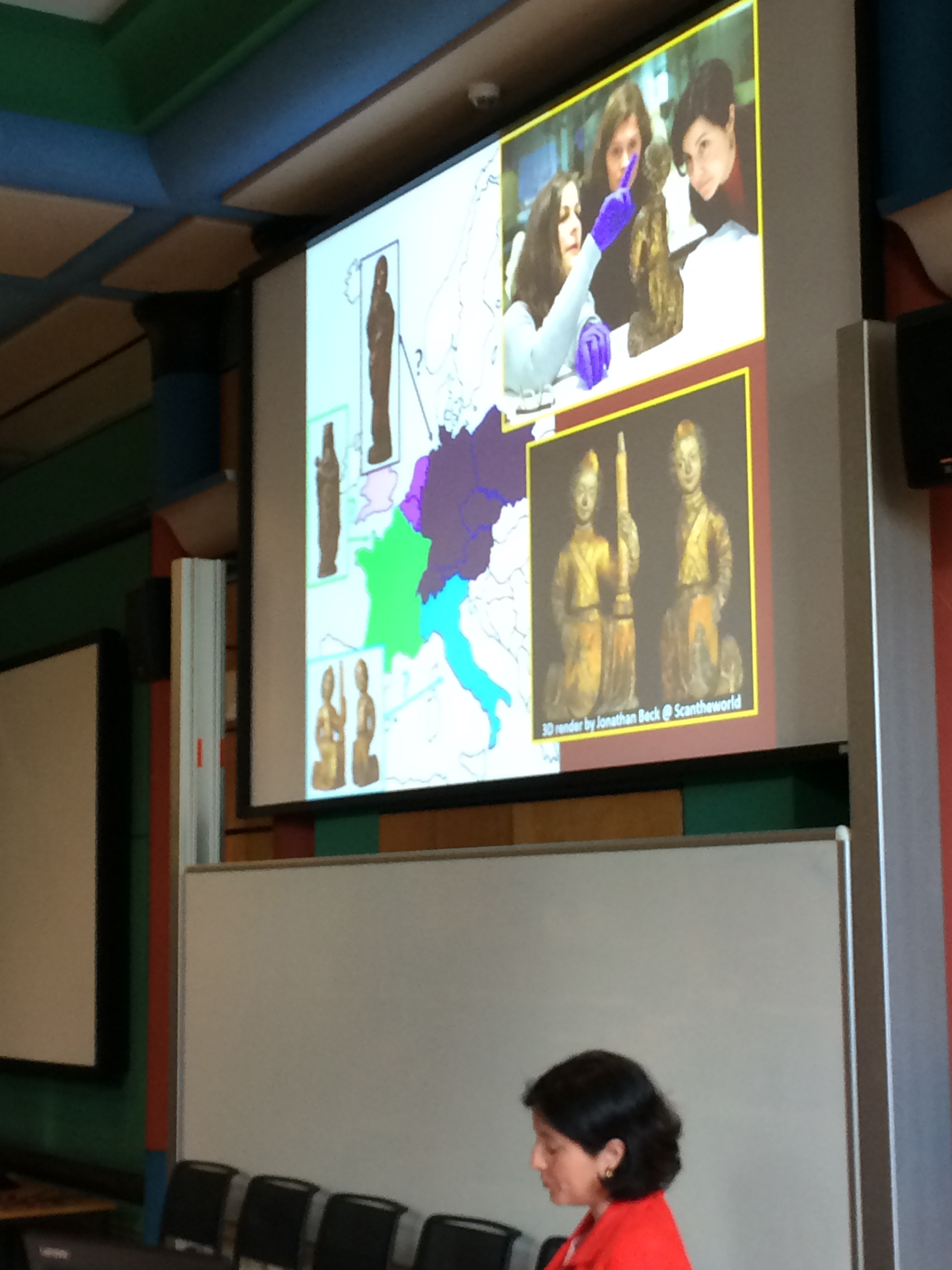
This project invited makers from around the world to reinvent medieval wooden sculptures from the Fitzwilliam’s collection. Using 3D scans available online, makers were free to reinvent shape, colour, function and context in a quest to explore new meanings. These were exhibited in the Fitzwilliam in May 2018, showing how creativity can help us re-imagine and re-interpret these artworks for the 21st century. Do these new creations inspire a new way of thinking about art? Do they help visitors engage with the sculptures in a different way?
Next up, we had Liz Pye from the Institute of Archaeology, UCL presenting on her research into conservation and tactile experiences with cultural objects.
She suggested that ‘selective touch’ and controlled handling of cultural heritage collections can provide important tactile experiences for better understanding of objects. Digital objects & replicas have a role to play in enhancing these experiences too.
Helen Strudwick (@hmstrudwick) & Julie Dawson from the Fitzwilliam presented on their research using high-resolution CT data to investigate the construction of ancient Egyptian coffins.
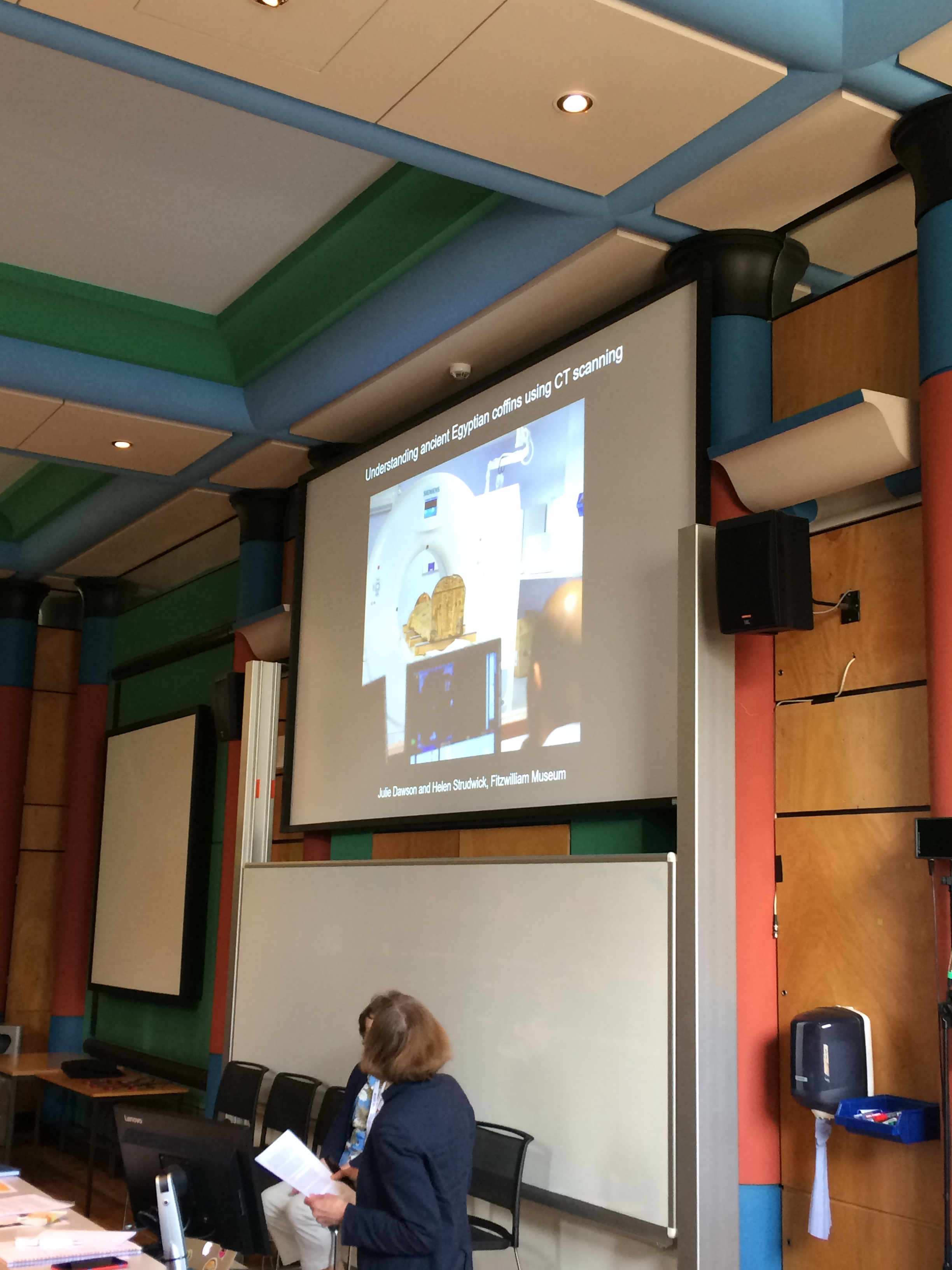
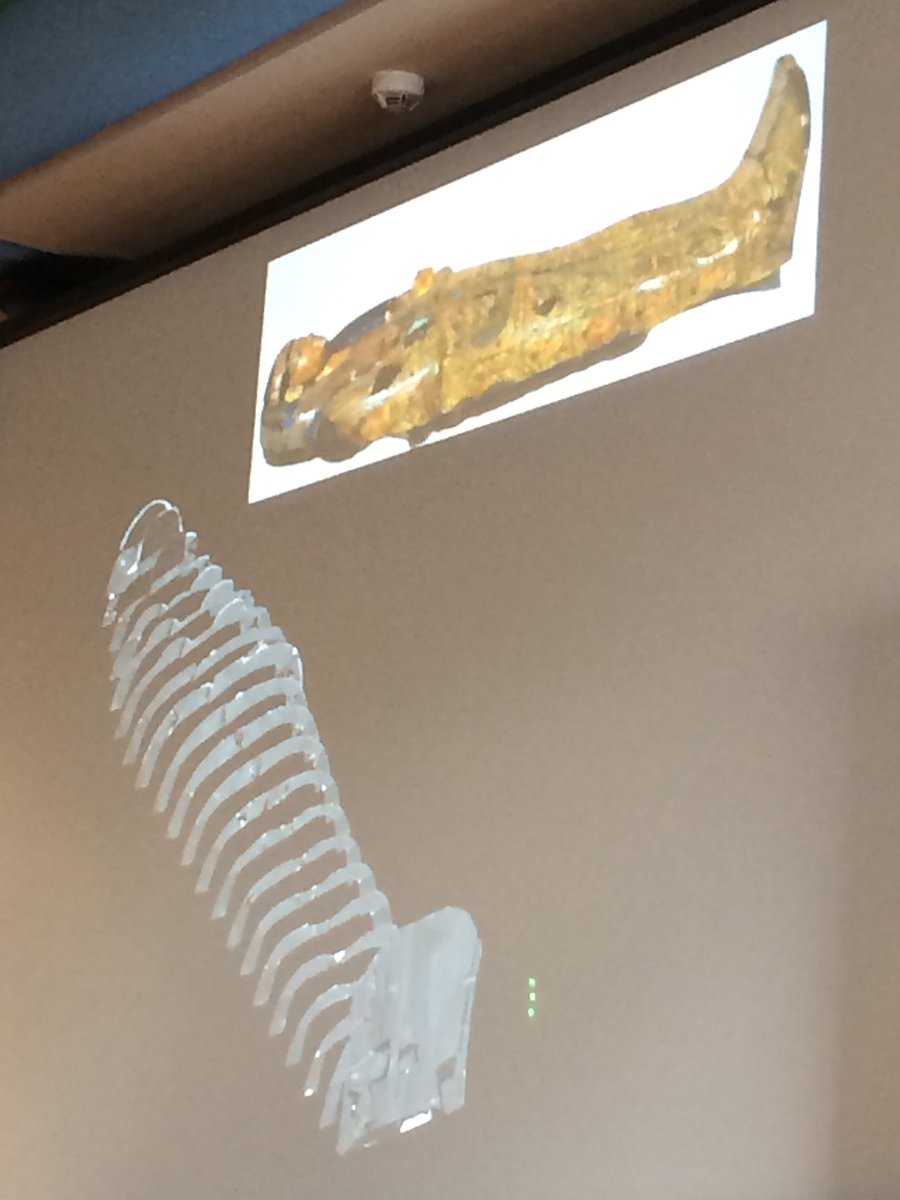
By using this advanced scientific imaging and non-invasive heritage science techniques, they have been able to produce a new holistic understanding of not just the ancient Egyptian coffins but also the people who were buried in them and the artisans and craftsmen who made them. More information can be found on the project’s website.
Anastasia Christophilopoulou (@AChristophilop1) from the Fitzwilliam then looked at the theories and reality of the imagined sensorially-engaged museum.

How can these approaches work in reality, and what role do our own cultural biases play? How can we integrate multi-disciplinary methodologies in order to create more meaningful sensorial experiences of museum collections?
Miranda Stearn (@MirandaStearn), Head of Learning at the Fitzwilliam, next spoke on UCM’s central remit to facilitate inspiring and innovative encounters between audiences and collections, informed by cutting-edge research.

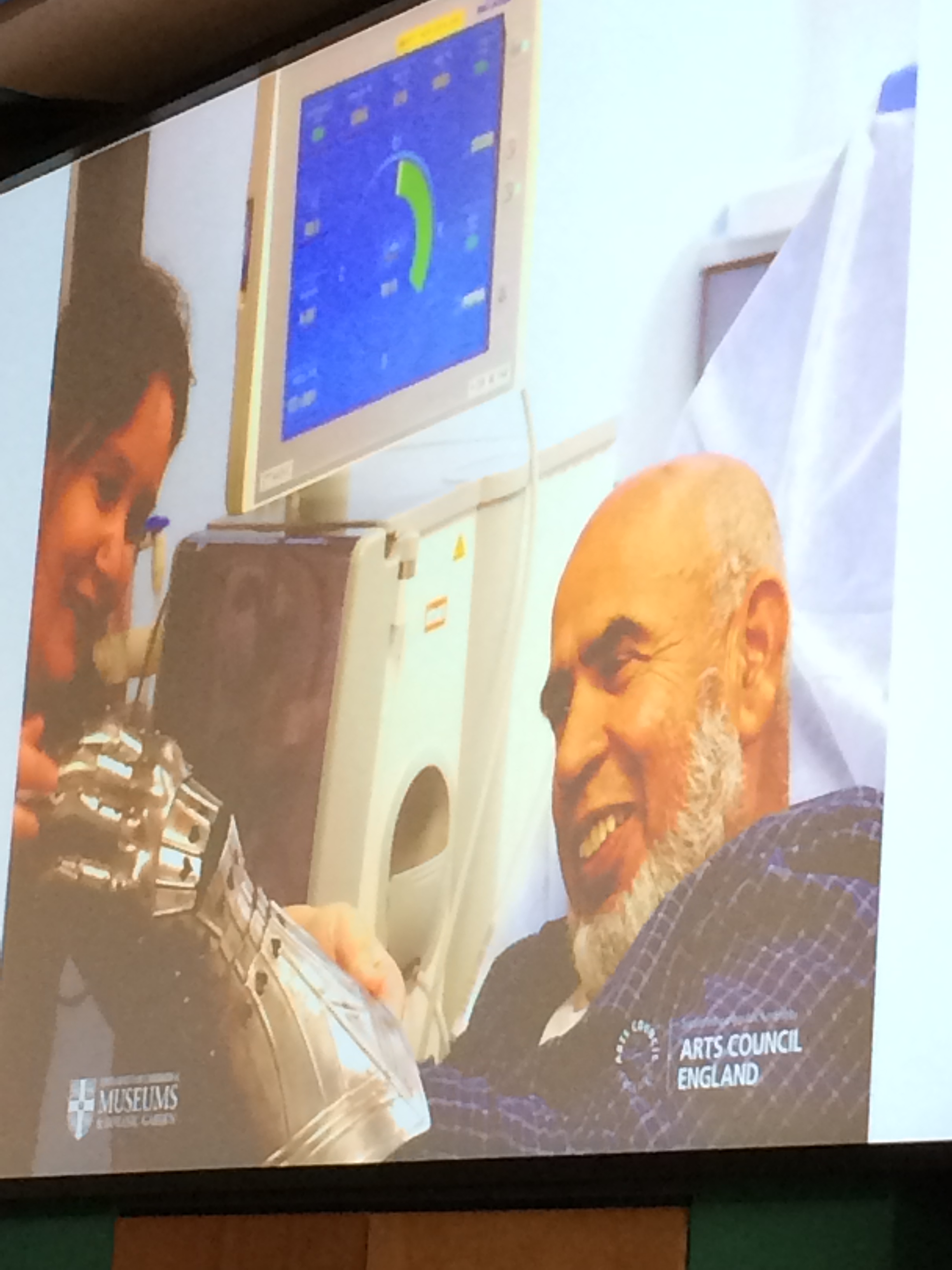
She outlined programmes they have developed in order to create learning experiences through handling sessions both inside the Fitzwilliam museum as well as externally in the greater community. In Particular, she focused on the emotional impact of touch and tactile experiences, highlighting the impact of bringing objects to patients in hospitals.
Next up, we had Abira Hussein (@AbiraHussein) discussing her awesome Nomad Project!
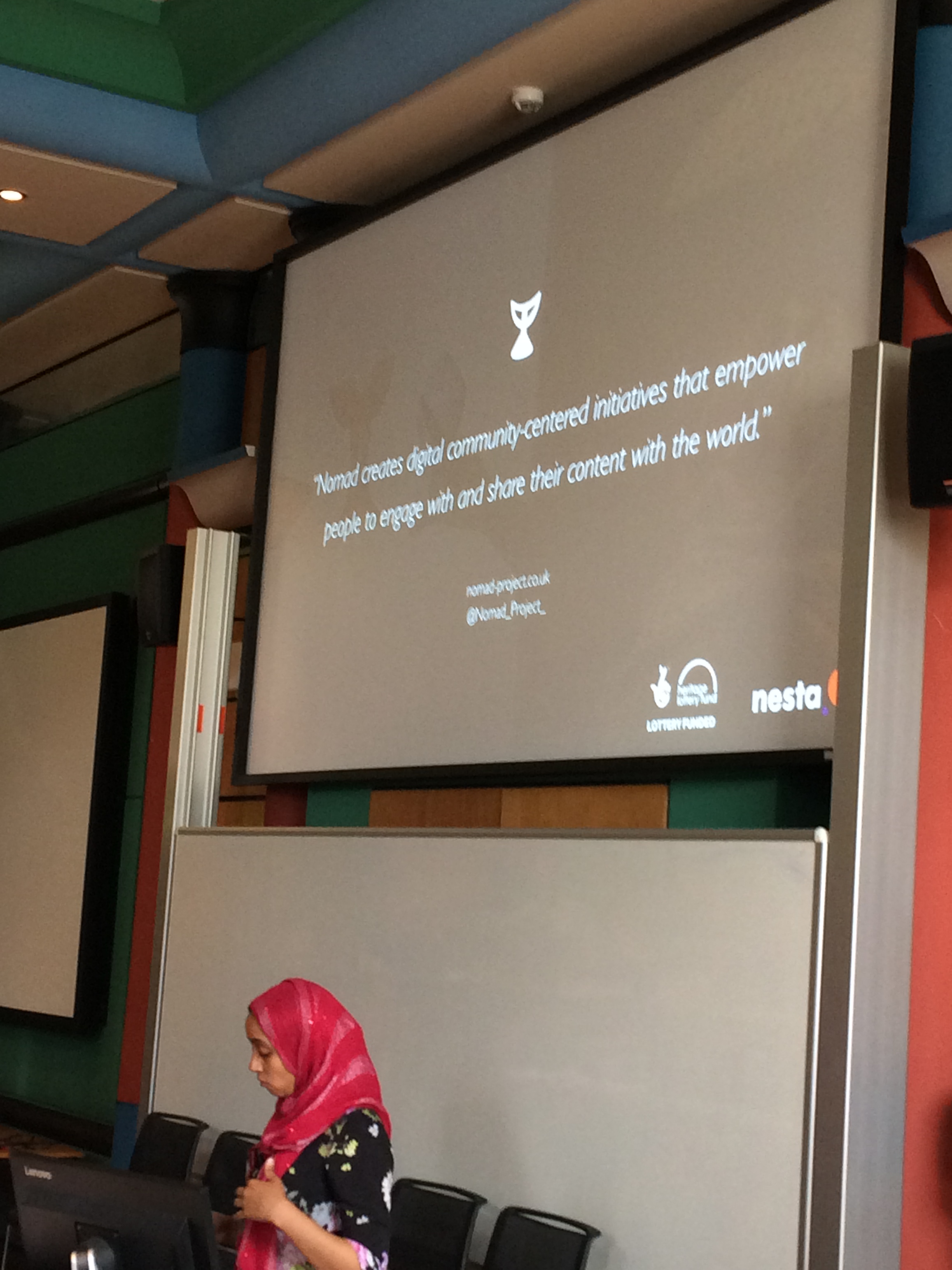
Abira’s project uses crowd-sourced archives and digitised objects to look at different ways of combining the experiences of the Somali diaspora and communities in Somalia, and presenting heritage and narrative - what does this mean for the community?
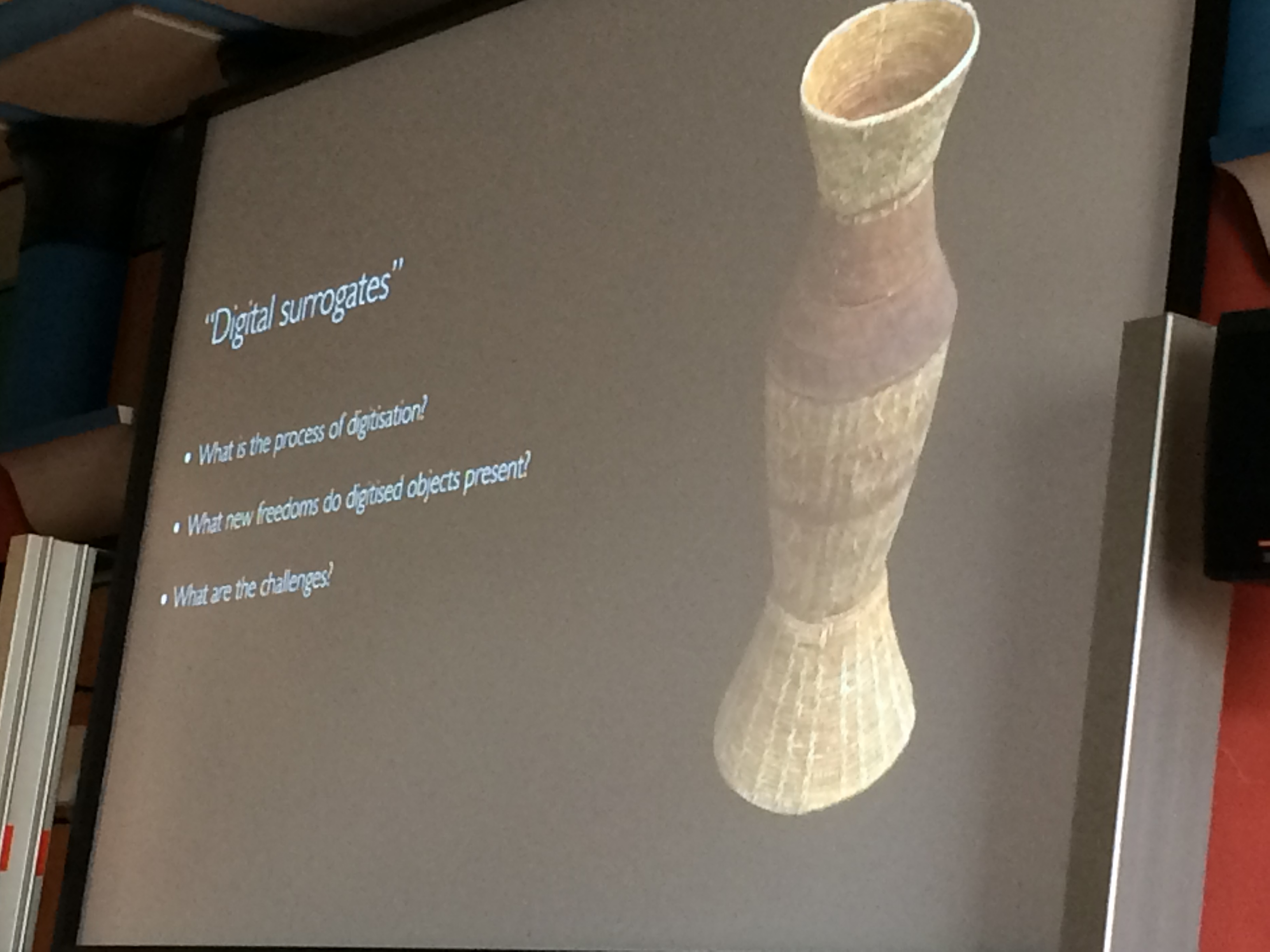
How can we create safe spaces, digital literacy, ensure workshops are open, and keep the archives sustainable? Abira makes excellent points that the digital process is to provide the end product and not the aim in itself.
How can digital archives be activist? I love Abira’s focus on community-powered archives to create new understandings and close digital divides – something we can all strive to achieve!
More exciting Cambridge research was presented by Orietta Da Rold (@orietta_darold), on experiencing medieval books and paper, touch, feel, authenticity.
How can we get people to better understand medieval paper through touching & experiencing paper? The variety and types of medieval paper can seem bafflingly to non-experts, but Orietta rightly points out that the modern and medieval interactions with paper are basically the same, but how do we communicate this to audiences? Communicating feeling & knowledge of the different ways it was made and used can enhance research and understanding.
Last presentation for this session, we had Lorna Richardson (@lornarichardson) from UEA DH looking at ethics in digital heritage.

How is the use of digital technology a political act and how are we all implicated? Are we making things better with all this digital work, or just increasing inequalities via digital divides and data control – some hard-hitting food-for-thought for everyone working in digital heritage!
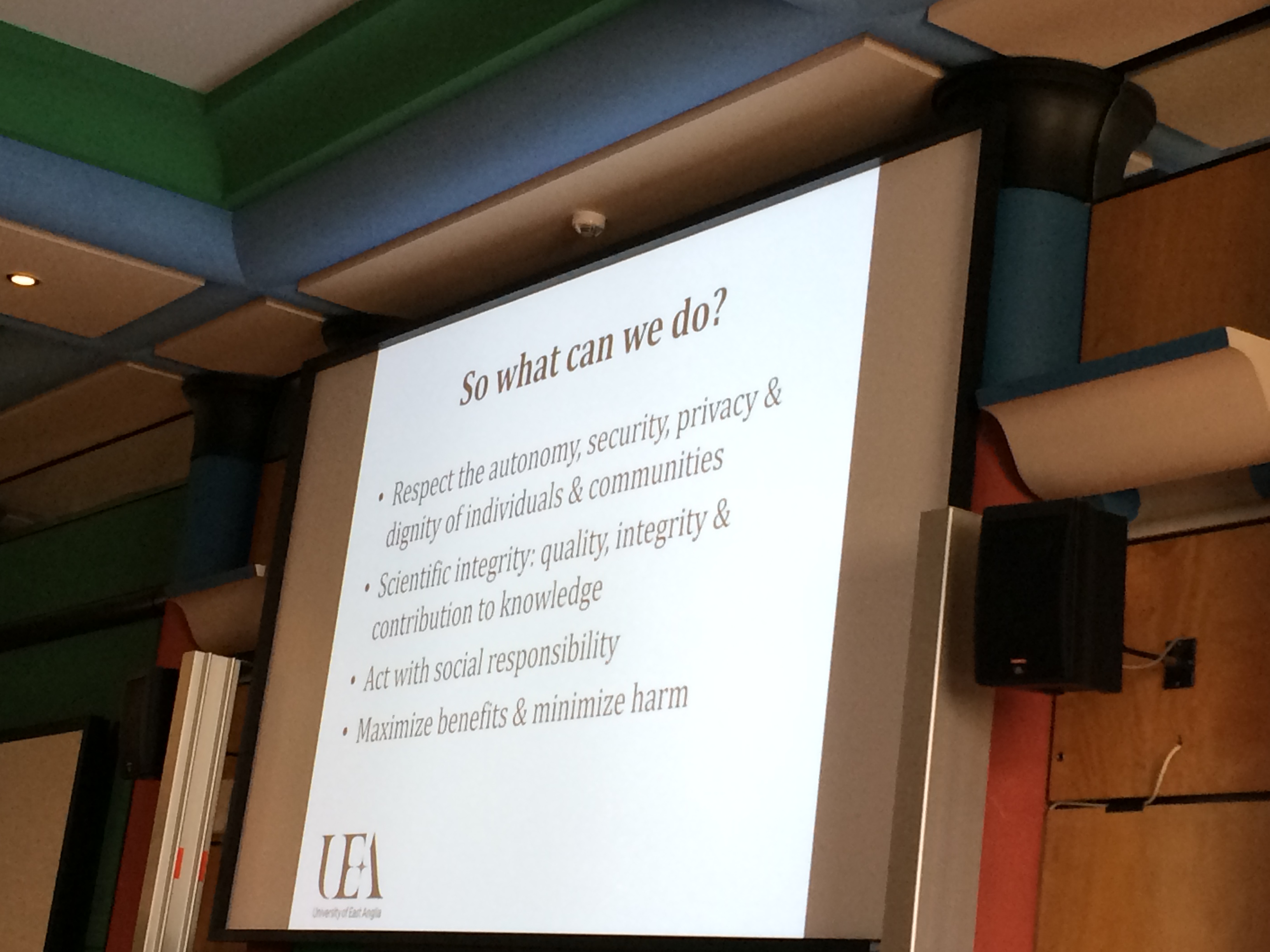
Lorna presents some possible ways forward for us all to consider – key goals to ‘maximize benefits and minimize harm’! I highly recommend all the #CEEF3D participants to have a look at the pdf of Lorna’s presentation for further suggestions on moving forward ethically with digital heritage projects.
What a fantastic morning session we had at #CEEF3D! Many thanks again to all the presenters for their thought-provoking and stimulating talks. There will be much more to inspire us in the round up of the afternoon session, stay tuned for the next instalment!